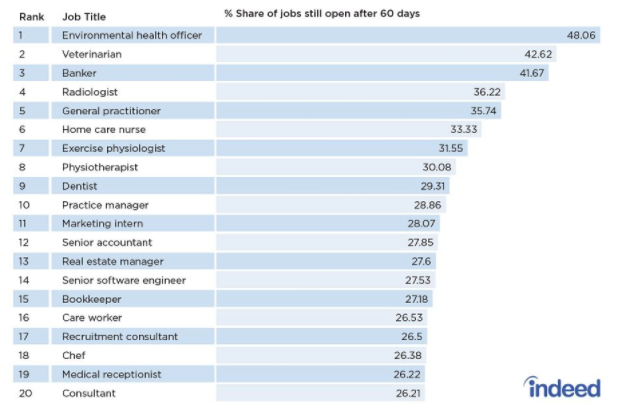When it comes to recruiting and retaining practitioners, on the surface it might seem like percentage of billings received is the determining factor. But in an industry of workers typically motivated by things other than money, there’s more to this than meets the eye.
Retaining Practitioners
There is nothing more costly for a medical practice than an empty consult room. So what can practices do to attract staff to fill those rooms, and more importantly, once successfully recruited how can practices retain high quality practitioners?
While there’s no question that remuneration is important in any recruitment discussion, the research suggests that it’s not the be all and end all when it comes to motivating practitioners. Here’s our take.
Remuneration
In order to attract and retain quality practitioners you will have to pay them accordingly. The most common model is to pay a percentage of their gross billings, which may range from as low as 50% in some corporate practices, to as high as 80% in regional areas that are in need of doctors.
Somewhere around 60-65% is the norm, and you may choose to add some performance based measures to reward your better performing practitioners. For example, some practices pay a percentage of billings based on gross billing tiers. The more a practitioner bills, the higher percentage share they earn, which can be good motivation for a practitioner to do their bit to keep the appointment book full.
Depending on the motivations of your practice, you might consider a model based on different percentages of billings for new or existing patients too.
Whatever number you decide on, the percentage itself is not necessarily the most important factor. A 2017 study of Australian GPs by Alecto found that the ‘65% of billings’ approach generally yields higher earnings than 70%; a somewhat counterintuitive finding that suggests a practice’s overall business model is more important to an individual practitioner’s earning potential.
Of the GPs who are earning 65% of billings, half earn between $350,000 and $550,000 per annum. Whereas of those GPs earning 70% of billings, only 16% are earning between $350,000 and $550,000 per annum.
Beyond percentage of billings, the decision of whether or not to share Practice Incentive Payments (PIP) with practitioners can also be an influencing factor. This income can become significant over time as a practice matures and grows. While there is no standard, it is common for the practice to retain any income from PIP, given the practice itself incurs the costs required to qualify.
Workload
Directly following on from remuneration is workload. Does your practice have a plan in place to keep the appointment book in the sweet spot? Medical professionals are generally motivated by patient outcomes and providing high quality of care, which means they need to see just the right amount of patients to be kept busy, but not overworked. What’s your plan to keep your appointment book full, and in busy times can your other staff handle the overflow?
It’s important to bear in mind that a new practitioner starts with an empty appointment book, so communicating with candidates to let them know how you plan to help them fill it is an important part of the conversation.
The same Alecto survey found that while money is a big motivation for GPs considering moving practice, better working hours, developing a special interest, better location, and the business of a practice are all top concerns for making a decision about where they work.
If you can provide an environment where practitioners can enjoy these alternative incentives, you’re well on the way to attracting and retaining high quality practitioners.
Working environment and support staff
The indirect benefits of working in a nice environment alongside well trained staff cannot be underestimated.
Keeping your practitioners comfortable is relatively straightforward: invest in a nice coffee machine, put on a monthly practitioner dinner, and let them personalise their consult room to their own liking. There are myriad ways to ensure that your most valuable resources are happy so that you can build sustainable revenue together through collective hard work.
In addition to the work environment, the role that support staff play is instrumental to keeping your practitioners focused on their patients, not paperwork. The British Medical Association reports a trend of increasing levels of bureaucracy taking valuable time away from a practitioner’s ability to provide patient care.
In 2013, 97% of GPs reported bureaucracy and box ticking had increased since 2012 while nine out of 10 GPs felt this took them away from spending time with patients. A separate study found that clinical staff spent up to 10 hours a week collecting or checking data and that more than a third of the work was neither useful nor relevant to patient care.
Keeping practitioners focused on what they’re best at – providing patient care – is a surefire way to keep them happy in their work.
HealthEngine streamlines work tasks to help practices increase efficiency and work smarter.
Discuss Your Practice With Us
Help with Recruitment
Business Insider reports that GPs, physiotherapists and dentists (as well as a host of other medical professions) are amongst the 20 hardest jobs to fill in Australia – so there’s no shame in reaching for help with recruiting good practitioners.
35% of GP jobs are unfilled 60 days after posting the vacancy.

While many are put off by the cost of working with recruiters, a good recruitment partner can dramatically reduce the time taken to fill a vacancy. Recruiters can also foster better initial relationships between your practice and a new practitioner.
The inherent trust that comes from being recommended can go a long way to keeping your practitioners happy in their work at your practice.
HealthEngine is partnered with HealthcareLink to help practices get access to high quality candidates without posting on multiple job boards. You can find out more here.
In Summary
- Pay your practitioners fairly, and offer them incentives to keep billings high
- Provide practitioners more than just money by offering the work-life balance that suits them best, and options to develop their clinical careers
- Make sure your practice is a nice place to come to work (plus this has other benefits, like keeping patients comfortable!)
- Keep your practitioners focused on their patients by having support staff take care of as much paperwork as possible
- Don’t underestimate the value of using a recruiter to find the best practitioners

